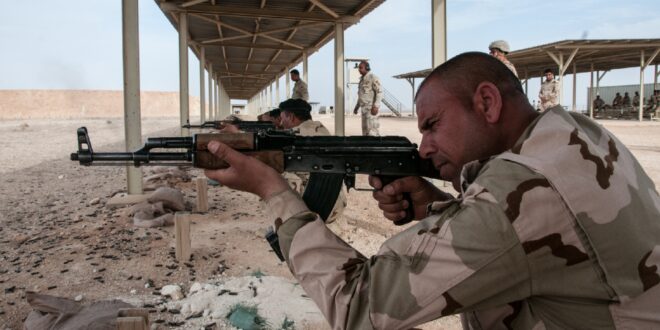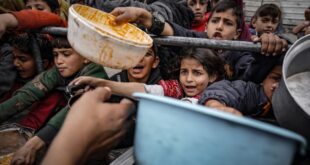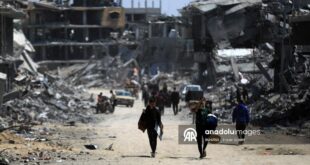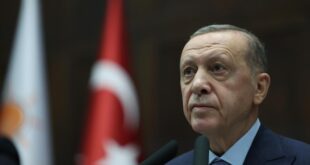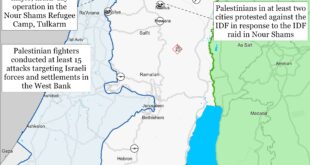Conditions in Iraq have improved to the point that, in December 2021, the United States ended its combat support operations in the country. A residual force of about 2,500 U.S. military personnel remains to advise and train Iraq’s security forces. Operation Inherent Resolve—the U.S.-led campaign to defeat the Islamic State—has moved into “normalized operations.” At a glance, Iraq looks unsettled but relatively stable compared to the chaos of previous years. But we have been here before.
Iraq looked to be in pretty good shape toward the end of 2011 when President Obama announced that the U.S. war in Iraq was over. The United States withdrew its combat troops at the end of that year, also hoping to normalize operations. They left behind well-equipped Iraqi security forces totaling more than 700,000 Western-trained soldiers and police. On paper, at least, there was some reason to believe the Iraqis were ready to defend themselves—but that proved not to be the case when the military was challenged by the Islamic State. As the United States enters a new phase of its relationship with the Iraqi army, it must learn from previous failures and begin the slow and steady work of building the Iraqi army’s will to fight along with its technical capabilities.
Partner Force Collapse
In early 2014—within three years of the coalition withdrawal—tens of thousands of Iraqi soldiers and paramilitary police abandoned their Humvees, artillery pieces and high-end armored vehicles, fleeing in the face of small numbers of Islamic State fighters armed primarily with AK-47s and riding in pickup trucks. More than 19 brigades of Iraqi soldiers and federal police disintegrated, allowing the Islamic State to capture one-third of Iraq, seize ground many U.S. troops had fought and died for, and impose their brutal rule over major cities like Mosul, which ended only in 2017.
Soon after Iraqi forces evaporated, U.S. Secretary of Defense Ashton Carter stated that “the Iraqi forces just showed no will to fight.” Many billions of dollars of equipment and more than a decade of advising were rendered all but useless in just a few weeks due to inadequate will. The United States had to return in force, putting troops back in harm’s way. Operation Inherent Resolve in (mostly) Iraq and Syria has cost well over $14 billion and caused 270 U.S. combat and noncombat casualties.
If the United States and the broader NATO advisory mission want to avoid a repeat of the Iraqi military’s collapse, they’ll need to refocus their efforts on building Iraqi will to fight. Briefly, will to fight is the disposition and decision to fight, act and persevere when needed. Since its inception in the early 20th century, Iraq’s military has struggled to build and sustain will to fight. In particular, the army—once referred to as the spinal column of nation-building in Iraq—has a shaky track record. But only the army has both the national respect and the sheer mass necessary to defend all of Iraq.
Iraqi Army Will to Fight, 1921-2022
Over its 101-year history, the Iraqi army has fought in five major conventional wars, including the Iran-Iraq War (1980-1988) and the first Persian Gulf War, which included the Iraqi invasion of Kuwait and Operation Desert Storm (1990-1991). In each of these wars, many individual Iraqi soldiers fought bravely, but often entire units collapsed and fled.
For example, in 1986 Iranian forces executed a surprise night attack against Iraq’s 26th regular army division dug in on the Faw Peninsula. The entire division broke and fled. Historian Pierre Razoux describes “groups of crazed [Iraqi] soldiers in tattered uniforms” escaping through marshes from the Iranian attackers. During the 1991 Gulf War, approximately 120,000 Iraqi army soldiers deserted before the start of Operation Desert Storm and approximately 80,000 more surrendered during combat. This failure of Iraqi will to fight cut Saddam Hussein’s combat power in half.
Iraqi army soldiers have also fought in a rolling series of counterinsurgency operations against Iraqi Kurds. Most recently, they fought against al-Qaeda-affiliated and nationalist fighters (2003-2013) and the Islamic State (2014-ongoing). In these wars, too, will to fight has ebbed and flowed. Neither al-Qaeda nor the Islamic State could have been rolled back without solid performances by many Iraqi military units. But in 2004, Iraqi soldiers refused to fight in Fallujah, and in 2015 both army and police units abandoned Ramadi en masse in the face of an Islamic State attack. Inconsistent Iraqi will to fight has dashed repeated U.S. efforts to hand responsibility for the country’s security back to the Iraqis.
Iraq’s Brittle Army
Iraqi army units generally stick to their guns when all factors line up in their favor. When they have more troops, better equipment, and the element of surprise, and face a weak adversary, Iraqis fight as well as or better than most peer militaries in the Middle East. But when conditions are adverse—when they are caught by surprise, when their senior leaders falter, when they find themselves on defense, at night—they too often break. Iraqi army units tend to be brittle. This is a fundamental flaw: Good, dependable military forces are supposed to fight well and avoid cracking even in bad situations.
Analyses of the Iraqi army’s will to fight show that brittleness emerges from a number of related, enduring cultural challenges. Iraqi society is patrimonial and centralized. Power within military units is so concentrated in the hands of a few top-level leaders that junior leaders (sergeants and lieutenants) are effectively powerless. Routinely unempowered junior leaders are equally unempowered when they try to build and sustain will to fight.
Patrimonialism in Iraqi society also suppresses individual adaptability. The learned ability and inclination to adapt feeds military success. At the individual soldier level, adaptability is also a core component of will to fight. Adaptability helps prevent brittleness. American military forces routinely train to adapt in combat, but the Iraqi military often does not.
Together, the social and organizational shortfalls afflicting the Iraqi military undermined U.S.-led efforts to build Iraq’s security forces after the 2003 invasion. Many U.S. advisers tried to help build Iraqi will, but they were constrained to more quantitative tasks.
Racing for the Exits, Racing Toward Failure
Between 2003 and 2011, bad decision-making and intensive, unrelenting political pressure on U.S. generals to throw together Iraqi security forces directly undermined Iraqi will to fight. In May 2003, the U.S.-led Coalition Provisional Authority (CPA) disbanded the Iraqi army, alienating hundreds of thousands of former soldiers and many of Iraq’s best military leaders. CPA Order 2 stands out for its imperious edicts and tone that seemed to willingly feed ensuing failures.
In August 2003, the CPA created the New Iraqi Army, a national military force birthed without a state to serve. Unsurprisingly, New Iraqi Army soldiers had little interest in fighting against their own people on behalf of the CPA. The same went for the shambolic Iraqi Civil Defense Corps and National Guard, neither of which defended or guarded much of anything. From 2003 through the U.S. withdrawal in late 2011, coalition military success was often measured by the number of troops generated and the speed with which they could be pushed to operate without support. U.S. policymakers were applying a rushed version of Vietnamization to Iraq with unsurprising results.
Applying intense political pressure to rapidly train and equip hundreds of thousands of Iraqi soldiers and police so that the United States could leave (“as they stand up, we stand down”) backfired. Numbers don’t matter if the troops won’t fight. Many advisers have pointed this out in formal reports and interviews since at least mid-2003. But instead of slowing down army and police training and taking a long-term view of the problem, U.S. leaders shifted focus to build up the Iraqi Special Operations Forces. They denied this was a “get out of Dodge” plan, but it appeared to be designed with that intent.
The Special Unit Stop-Gap Solution
Heavy U.S. investment in special units followed a longstanding and unhealthy predilection in the Iraqi security services. Iraqi leaders have long been predisposed to strip regular units of their best soldiers to build ad hoc commando units. During the Iran-Iraq War, Saddam Hussein built up the Republican Guard at the expense of regular army units, most of which worsened as the best leaders, soldiers and equipment went to the guard. But there weren’t enough guard units to defend Iraq from invasion.
In the late 2000s, the United States made heavy bets on Iraq’s elite Counter Terrorism Service (CTS). Again, special units took the best leaders and equipment while the army and police stagnated and lost their will to fight. After the regular force collapsed in 2014, the United States doubled down on these bets, sinking even more money and the best training into CTS.
Backing CTS helped Iraqi forces stop the Islamic State advance in 2014 and 2015 and finally retake the city of Mosul in 2017. But CTS would never have succeeded without direct support from rebuilt Iraqi army units. Even a rudimentary examination of the counter-Islamic State war reveals that the warfighting principle of mass still applied. At best CTS can field 20,000 troops, nowhere near enough to defend Iraq from even irregular internal threats, let alone an organized enemy or foreign military. Securing a country of perhaps 40 million people spread out across 434,000 square kilometers in one of the most volatile regions of the world requires a dependable national army.
The Right Approach
Success requires two substantive changes in the way the United States approaches security force assistance in Iraq. First, priority support needs to shift from reinforcing a small number of special units to improving the quality and capabilities of the much larger Iraqi army. The path to real, lasting normalization of U.S. assistance in Iraq is through the development of large numbers of dependable regular forces.
Second, building will to fight in Iraq’s army will take many years and will not significantly reduce the near-term need for advisers and funding. The necessary changes are gradual and mostly qualitative, but they are required to prevent another disastrous and costly relapse. Specific actions include working with Iraqi leaders to sharply increase junior leadership training, practice adaptation in uncertain situations, develop esprit de corps through the development of Iraqi army historical narratives and build on growing nationalist sentiment in the broader public.
All of these approaches, and others I recommend in my report, will be familiar to military leaders. In fact, advisers in Iraq have long recognized the need for these approaches but have never been given sufficient time or resources to enact them. During my research I uncovered a 2006 Iraqi army training manual—most certainly co-authored with U.S. advisers—mandating the patient development of junior leadership, adaptability and esprit de corps.
U.S. policymakers have known for many years what it will take to build genuine security in Iraq: a dependable and effective army with the will to fight for Iraq’s future. The United States can now take advantage of the de jure assistance normalization to gradually build the partner force needed for de facto normalization in Iraq.
 Eurasia Press & News
Eurasia Press & News
